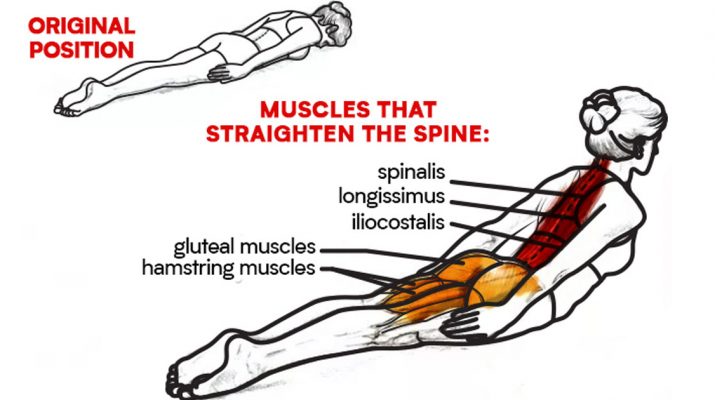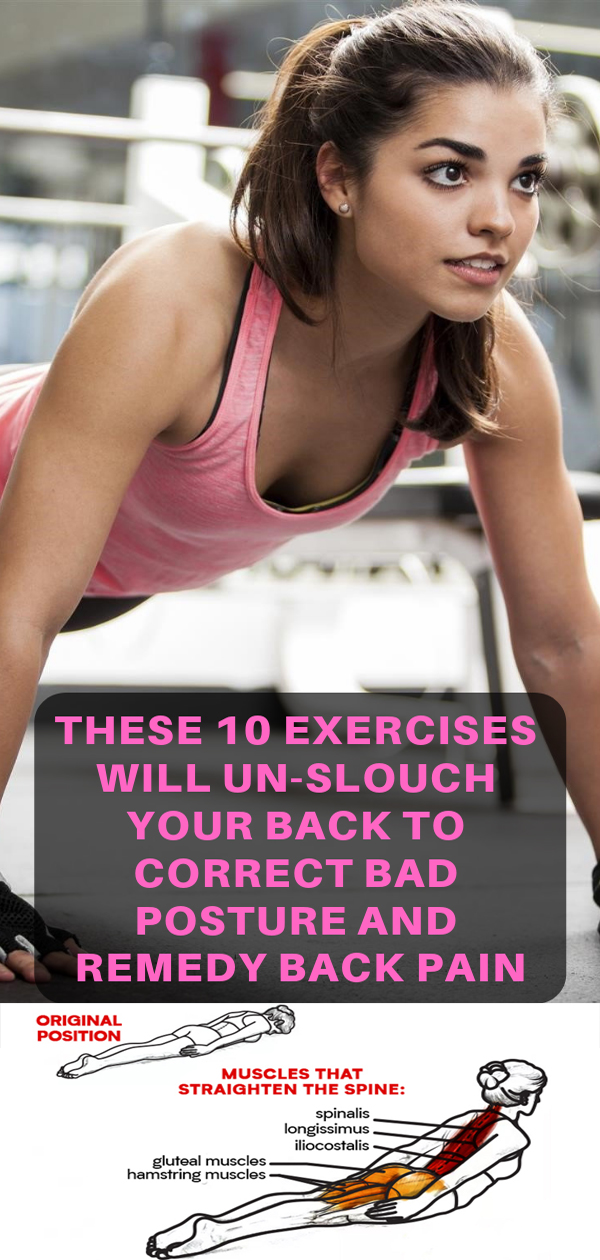Bad posture seems to be an epidemic in the modern world, as we spend our days in front of the TV or computer, sitting most of the time, and most of us are physically inactive.
According to VeryWellHealth:
“Good posture is a form of fitness in which the muscles of the body support the skeleton in an alignment that is stable as well as efficient. This state of being called good posture is present both in stillness and in movement.
Unfortunately, numerous factors one may encounter in life can get in the way of good posture. For more people than not, bad posture comes about by the day to day effect of gravity as it acts on our structure. Bad posture may be due to an injury, a disease or because of genetics — i.e., the things that for the most part, you can’t control. A combination of these factors is also quite common.”
Namely, poor posture can be a result of improper sleeping positions, slouching, obesity, weak or tight muscles, low self-confidence, anxiety, and stress.
Yet, poor posture and slouching can also lead to the development of health problems, such as:
- Back pain
- Poor circulation
- Stiffness
- Injuries
- Sciatica
- Difficulty breathing
- Joint pain and discomfort
- Headaches
- Fatigue
- Muscle strain
- Digestion issues
- Muscle atrophy and weakness
- Nerve compression
Dr.Axe adds:
“Poor posture results in a number of symptoms due to how it forces the body to compensate. For example, if someone is lateralizing their center of gravity to the right, it will force their pelvis to rotate and their body to compensate in other ways too.
When we can’t activate certain muscles or joints properly due to compensations, we develop symptoms such as trouble breathing, backaches, neck pains and so on.
Over time compensations can start to “feed a pain-pattern”, or “whatever you load, you will reinforce.” For example, if you have poor form while exercising, you’re only further reinforcing your body’s harmful compensations. The more weight you lift, the more you develop ingrained movement patterns. If you already have an unhealthy movement pattern, adding weight usually only makes things worse.”
Even though it will take time and efforts, you can improve poor posture, and prevent these health issues.
Stretches and exercises are the best way to soothe back pain, strengthen the muscles, and correct your improper body posture:
Pectoral Doorway Stretch
Stand inside the doorway with the right arm at 90 degrees and the forearm against the doorframe. Rotate the chest to the left to feel the stretch, and hold for half a minute.
Plank
Start in a press-position, rest the weight on the forearms, bend the elbows on the ground, engage the core, and hold for a minute.
Bow Pose
While lying on the stomach, bend the knees to bring them to the hips, grab the feet with the hands, raise the chest, knees, and head off the mat, and inhale. Kick the legs to allow your arms to of naturally with them, and exhale. Make 5 repetitions.
Back extension
While lying on the stomach, with the forehead on the floor, and the arms on the sides, with the palms on the thighs, strengthen the elbows, squeeze the legs with the toes outwards, and exhale. Elevate the head, chest, and upper abdomen, and while exhaling, lower them.
Thoracic Extension
While lying on the back with a foam roller under the spine, lift the glutes up, and move back and forth using the heels. Roll for about 20 seconds.
Upright Snow Angels
With the knees, a bit bent, press the lower and upper back and head against the wall. Then, press the back of the arms against the wall with the fingers pushed against it, move them above the head while pushing the body against the wall, and repeat 10 times.
Pectoral Ball Smash
You should place a tennis ball between the chest near the shoulder and the wall, and roll it around until you find a tight spot that causes discomfort. Hold for 20 seconds there, and then roll the ball again.
Cat/Cow Pose
Start on all fours, the palms under the shoulders, and the knees below the hips. Inhale, pull the belly in, and stretch the back like a cat and curve the spine. Return to the initial position, to stretch the head and tailbone up, and repeat 5 times.
Cobra Stretch
Lay down with the hands on the mat, and the palms facing down under the shoulders. While inhaling, elevate the ribs off the floor, heart forward, keep the shoulders back, but make sure you do not crunch your neck. Hold for half a minute.
Broom Shoulder Stretch
Hold a band, broomstick, or pipe in front of your body, with an overhand wide grip, and raise it above the head, all the way around, until it touches the buttocks. Repeat 10 times.
Remember that you need to do these exercises regularly, in order to be able to reap their benefits. After a while, your pain will slowly decrease, and your body posture will drastically improve.


